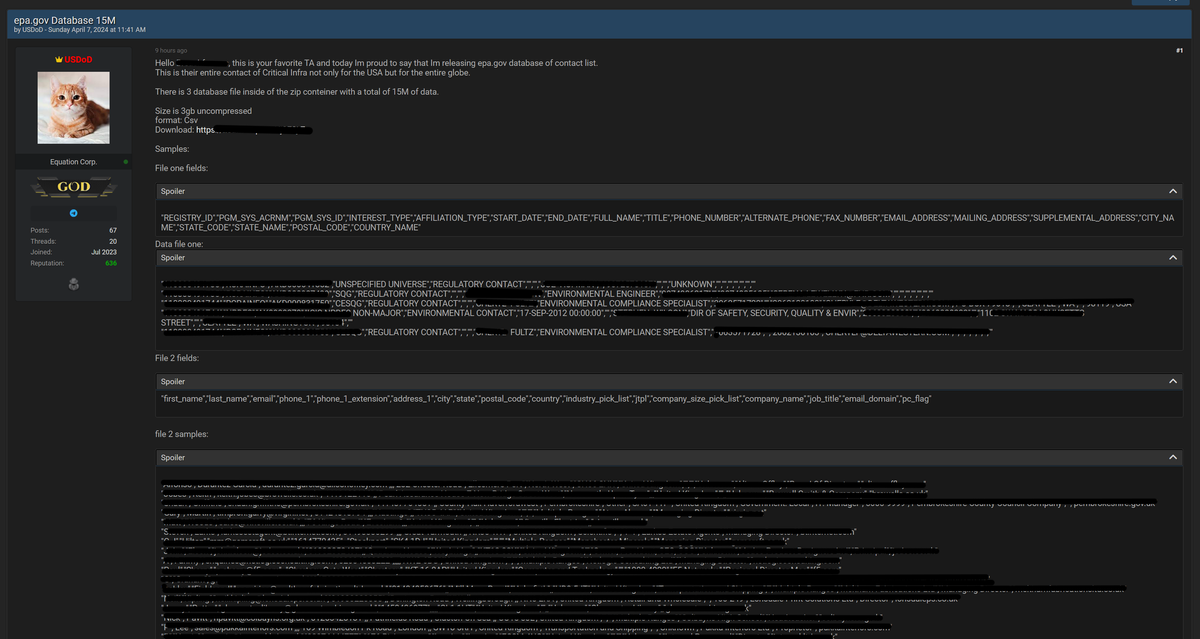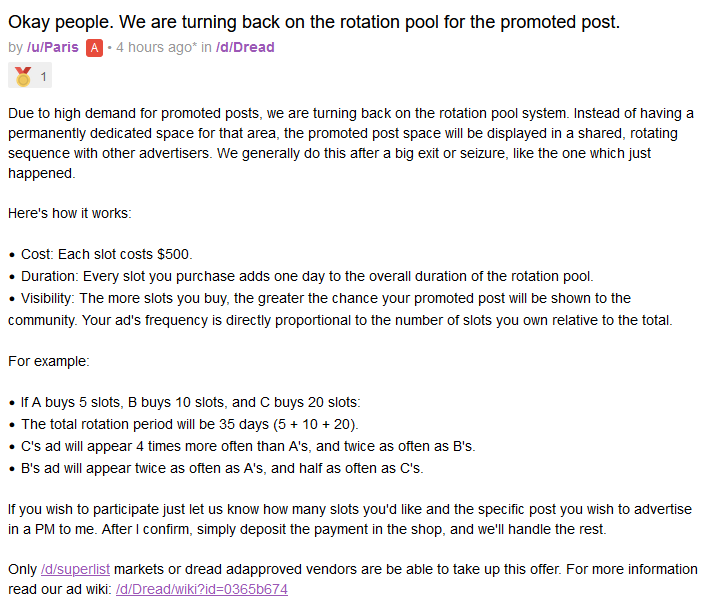USDoD Strikes Again, EPA Cybersecurity Breach That Exposed 15 Million Records

The U.S. Environmental Protection Agency (EPA), a critical federal body tasked with safeguarding the environment, has reportedly suffered a significant data breach affecting over 8.5 million individuals. The breach was announced by a notorious hacker known as USDoD, who claimed responsibility for leaking the agency’s comprehensive database. This breach has prompted a flurry of investigations and concerns as it involves sensitive personal and business information, potentially compromising the security of numerous individuals and organizations.

Detailed Overview of the Breach
- Public Disclosure and Data Volume:
The breach was publicly announced by USDoD on a notorious hacking forum, Breachforums, with the hacker claiming to have released three zipped CSV files totaling 500MB. These files, named Contact, Inter_Contact, and Staff, collectively contain nearly 8.5 million unique records. This extensive collection of data was confirmed through detailed analysis by sources such as Hackread, adding credibility to the claims (Source). - Specifics of the Leaked Data:
- Contact File: 3,726,130 records featuring zip codes, full names, phone numbers, email addresses, and mailing addresses.
- Inter_Contact File: 9,952,374 records, including additional fields like email domains, company names, and addresses.
- Staff File: 3,325,973 records with detailed information such as business addresses, company names, and related industries.
These files collectively represent a deep and broad swath of data, potentially exposing individuals to significant security risks.
- Background of the Hacker
USDoD, previously known as NetSec on RaidForums, is a repeat offender with a history of breaching U.S. federal systems. According to SOCRadar, he is a South American male in his mid-30s, previously mischaracterized as a pro-Russian threat actor. His method typically involves sophisticated social engineering to gain unauthorized access to sensitive data. - Immediate Consequences and Security Risks:
The breach has reportedly exposed sensitive information that could be exploited for phishing attacks, thereby increasing the vulnerability of the affected individuals to identity theft and fraud. It also poses a risk of undermining the trust in the security of sensitive government-held data, potentially impacting the EPA’s reporting and regulatory oversight capabilities. - Official Response and Proactive Measures:
Although the EPA has yet to confirm the breach officially, the agency, in collaboration with the Cybersecurity and Infrastructure Security Agency, is actively investigating the extent of the intrusion. Measures are being implemented to bolster security and mitigate potential damage from the breach. - Past Incidents Linked to USDoD:
This is not USDoD’s first encounter with infiltrating government databases. Previous notable breaches include the unauthorized access to InfraGard’s database, affecting 87,000 members, and a data leak concerning 3,200 Airbus vendors, showcasing his continued focus on high-value targets (InfraGard Incident).
Reflection
This event highlights the persistent and evolving challenges cyber threats pose to national security and personal privacy. It underscores the urgent need for continuous improvements in cybersecurity protocols and practices at all levels of government and industry. The EPA’s breach is a stark reminder of the complexities of protecting sensitive information in a digitally interconnected world.
For further updates and official statements from the EPA, please refer to their newsroom and data usage and citation guidelines.



